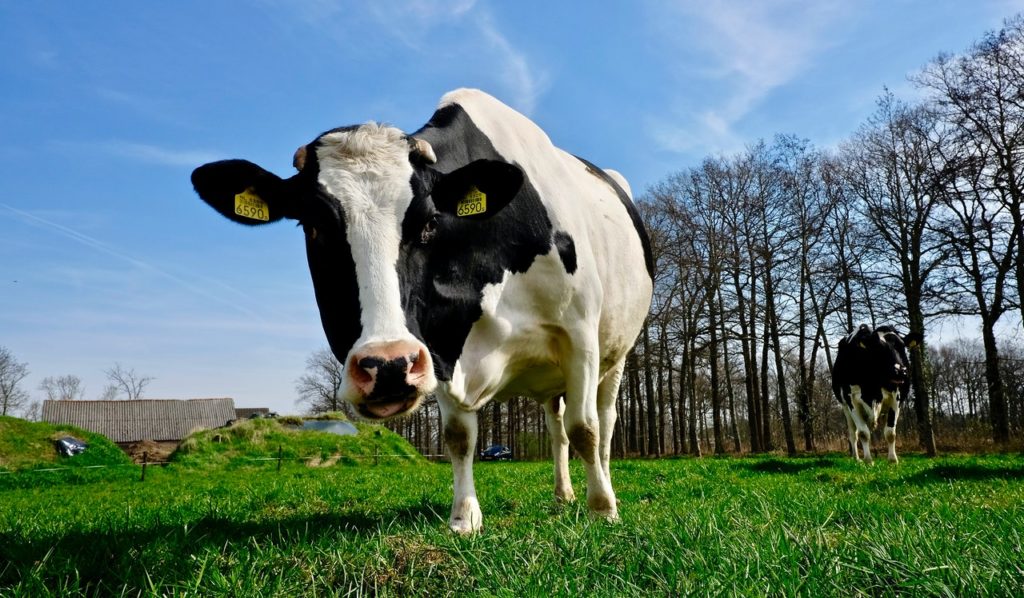The Benefits of Rumination Monitoring
19 December 2023
Cows will typically ruminate for around 500 minutes a day (7-8 hours) and a reduction in rumination time can be a sign that something is not quite right. Cows can be visually observed for rumination activity, the target being 60% or more cows lying down to be ruminating at any one time. Counting cud chews in individual cows is also a crude indicator of rumen health, with between 55-70 cud chews before swallowing considered optimal and less than 55 potentially indicating sub-clinical acidosis. However, making visual observations is labour intensive, time consuming and does not quickly identify individuals that may need attention. The proportion of the herd ruminating at any one time can also be affected by feeding times and when observations occur.
There are many technologies available for heat detection and fertility management, as well as health monitoring for dairy cattle. Several of these ear-tag, collar or bolus systems can measure eating and rumination times, which are extremely valuable to identify nutritional issues, poor rumen function and sick cows.
Early Disease Detection
A rumination monitoring system is really valuable to aid early detection of disease. Many studies have shown that rumination drops on average 12-24 hours before there are visual signs of ill health, such as a decline in milk production, change in temperature or other clinical signs. Therefore, monitoring rumination time can be used for early detection and treatment of conditions such as mastitis and metritis, leading to improved recovery times and minimising any loss in milk. It is particularly useful to monitor rumination in newly calved cows, as those with low rumination times tend to be more susceptible to disease, whether infectious or metabolic. These systems also allow the efficacy of treatments to be evaluated by how quickly affected cows return to their normal rumination level.
When looking at an individual cow’s rumination data, it is important to compare it against that animal’s own baseline pattern, which will differ between animals, depending on their diet, feed intake, milk yield and stage of lactation. The follow table shows expected changes in rumination time with various management procedures and health issues. Checks are recommended if rumination time drops more than 30-50 minutes per day for individual cows or a group.
| Activity/Stressor | Reduction in rumination time (minutes/day) |
|---|---|
| Calving | -170 to -225 |
| Oestrus | -75 |
| Hoof trimming | 0 to -45 |
| Health stress | -20 to -70 |
| Mastitis | -63 |
Source: Rick Grant, The Miner Institute
Other Uses of Rumination Monitoring
Rumination monitoring can also be used in addition to activity information to confirm if cows are in heat. The time spent ruminating tends to decrease the day before oestrus, reaching a minimum on the day of oestrus, which can be over an hour less than baseline levels. Rumination tend to recover to normal baseline levels the day after oestrus.
When it comes to nutrition, the NDF (neutral detergent fibre) and starch content are the two main dietary factors influencing rumination times. Dietary changes that reduce the NDF content and increase the starch level will tend to reduce rumination, with a greater reduction throughout the night compared to mid-day. This is because the time spent ruminating varies throughout the day, with cows ruminating more at night and after feeding periods. Normal rumination patterns can also be affected by different feeding times and reduced feed intake where there is overstocking and not enough feed space.
If you are looking to invest in a fertility management system, it is well worth considering a system that can also monitor rumination time to aid nutritional management and early detection and treatment of disease to optimise productivity and overall herd health.
Lorna MacPherson, SAC Consulting
lorna.macpherson@sac.co.uk; 07760 990901
Sign up to the FAS newsletter
Receive updates on news, events and publications from Scotland’s Farm Advisory Service

